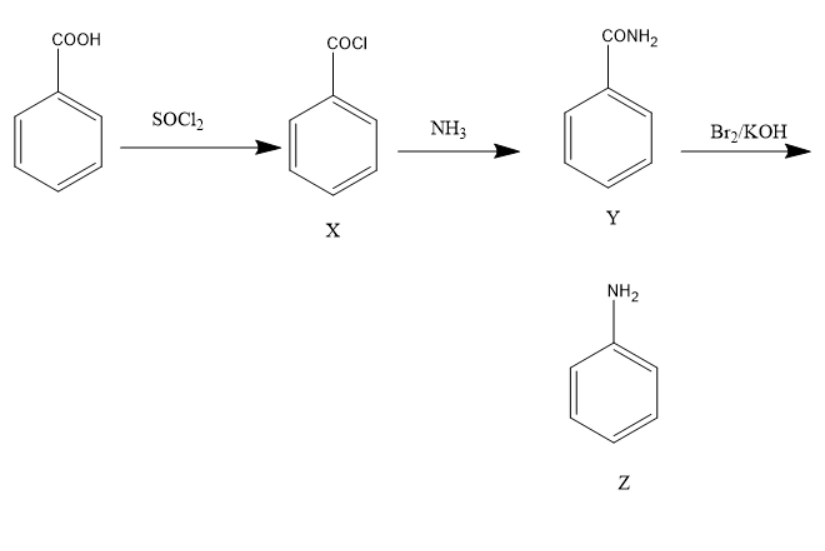Question
Question: Benzoic acid is treated with \( SOC{l_2} \) and the product X is formed with ammonia to give Y. Y on...
Benzoic acid is treated with SOCl2 and the product X is formed with ammonia to give Y. Y on reaction with Br2 and KOH gives Z. What is Z in the reaction?
Solution
Benzoic acid is a carboxylic acid when treated with thionyl chloride (SOCl2) the carboxylic acid group changes to acid chloride. When this acid chloride with ammonia forms an amide. An amide when treated with Br2 and KOH undergoes Hoffmann reaction to form a primary amine. Thus, the final product is aniline.
Complete Step By Step Answer:
Chemical compounds are classified based on the functional group present in the compounds. Reagents added to the compounds lead to the formation of new compounds.
Benzoic acid is a carboxylic acid with a −COOH group on a benzene ring. Thionyl chloride is a chlorinating agent with a molecular formula of SOCl2 . When Benzoic acid is treated with SOCl2 the carboxylic acid group converts into −COCl . When the newly formed compound is treated with ammonia the acid chloride group converts into an amide group. As the chlorine is replaced by an amine group. When this benzamide is treated with Br2 and KOH undergoes Hoffmann bromination and forms an aniline. In this reaction an amide group converts into an amine group.
The chemical reaction is:

Thus, the product Z is aniline.
Note:
Substitution reaction is the reaction in which one group can be replaced by another compound. In the above reaction, thionyl chloride is a chlorinating reagent that replaces hydroxyl group by chlorine. Chlorine is replaced by amine by the action of ammonia. Amide can be replaced by an amine by bromine and potassium hydroxide.
